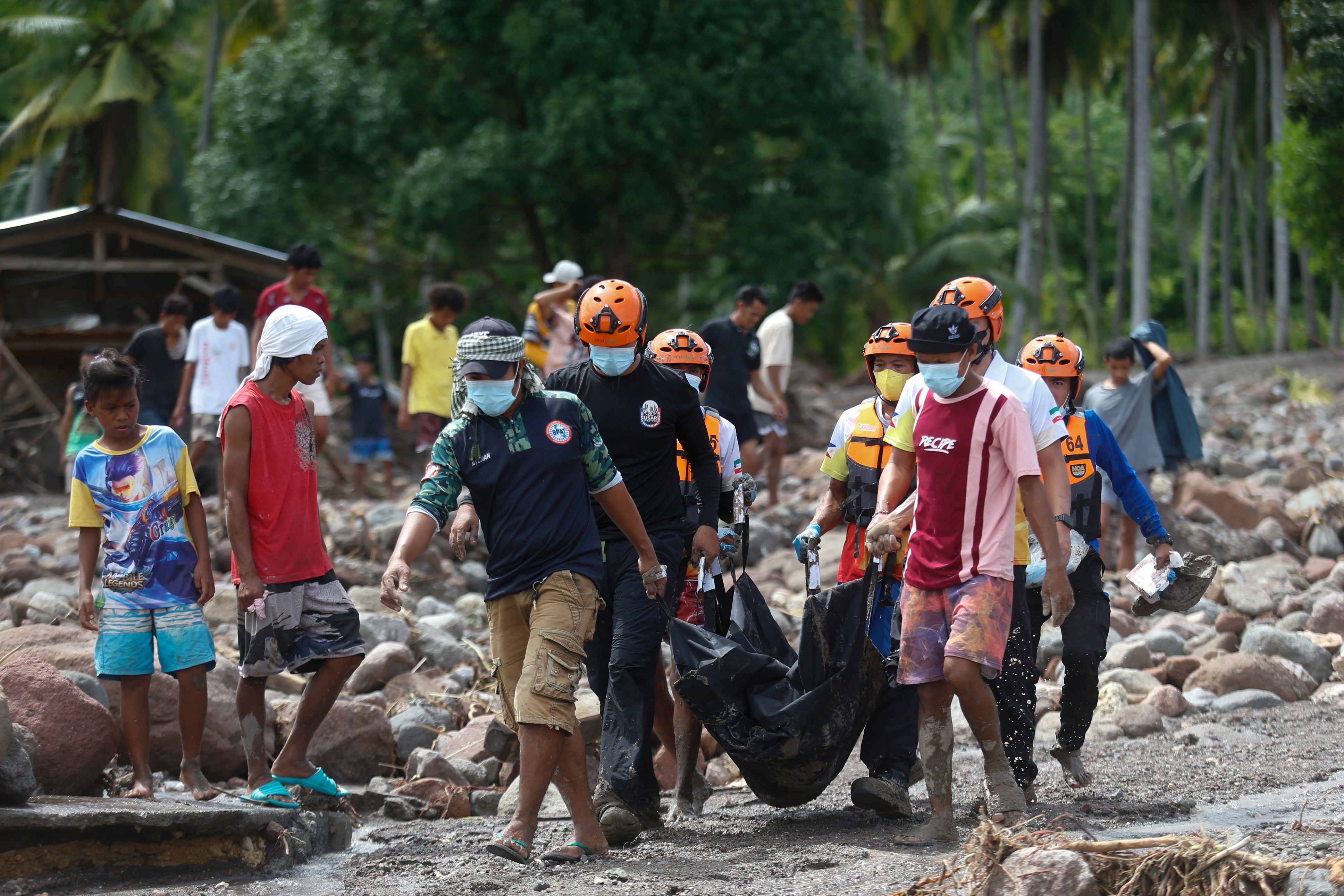Philippine mudslide victims ran towards mountain ‘to get away from tsunami’, officials say
‘It was not a tsunami that inundated them but a big volume of water and mud that came down from the mountain’
Many of the deaths during Tropical Storm Nalgae in the Philippines happened because people had run towards a mountain to save themselves from an expected tsunami, but instead got buried alive by a boulder-laden mudslide, an official has revealed.
Rescuers dug out 18 bodies of victims from underneath the rubble in the vast muddy mound that now covers much of Kusiong village in southern Maguindanao province, in what was one of the deadliest incidents caused by Nalgae.
Now officials have revealed the incident occurred because of a false alarm of a tsunami, after which villagers decided to run towards high ground.
“When the people heard the warning bells, they ran up and gathered in a church on a high ground,” Naguib Sinarimbo, the interior minister for the Muslim autonomous region run by former separatist guerrillas, told the Associated Press, citing accounts by Kusiong villagers.
“The problem was, it was not a tsunami that inundated them but a big volume of water and mud that came down from the mountain.”
Tropical Storm Nalgae was the second deadliest storm to hit the Philippines this year with the death toll standing at 61 on Sunday, with many still missing.
The authorities leading the ongoing rescue operations fear 80 to 100 more people, including entire families, may have been buried by the deluge or washed away by flash floods.
The storm made multiple landfalls over the weekend but has been wreaking havoc in Maguindanao province since Thursday, with heavy rains triggering mudslides. Most of the deaths from the storm were reported as victims of these mudslides.
Officials point out that the incident occurred following disaster-preparedness drills carried out every year for decades to brace for a tsunami because of a deadly history in the country.
“Every year, they hold drills to brace for a tsunami. Somebody was assigned to bang the alarm bells and they designated high grounds where people should run to,” Mr Sinarimbo said.
“Villagers were even taught the sound of an approaching big wave based on the recollection of the tsunami survivors.
“But there wasn’t as much focus on the geo-hazards on the mountainside.”
Mr Sinarimbo said many of the missing in Kusiong were not included in the government’s official tally because entire families may have been buried and no member was left to provide names and details to authorities.
Army lieutenant colonel Dennis Almorato, who went to the mudslide-hit community on Saturday, said the deluge buried some 60 rural houses in around 12 acres of the community.

He gave no estimate of how many villagers may have been buried but described the extent of the mudslide as “overwhelming” and said the night-time disaster may have unfolded quickly.
More than 100 domestic and international flights were cancelled, Manila’s international airport was briefly closed amid stormy weather, and sea voyages in storm-whipped seas were prohibited by the coastguard, leaving thousands of passengers stranded.
President Ferdinand Marcos Jr expressed disappointment over the high casualty toll in a televised meeting with disaster-mitigation officials on Saturday.
“We should have done better,” he said. “We were not able to anticipate that the volume of water will be that much, so we were not able to warn the people and then to evacuate them out of the way of the incoming flash floods.”
The Philippines is hit by around 20 typhoons and storms each year due to its unique geographical position. It is located on the Pacific Ring of Fire, a region along most of the Pacific Ocean rim where many volcanic eruptions and earthquakes occur, making the nation one of the world’s most disaster-prone.
Additional reporting by agencies
Join our commenting forum
Join thought-provoking conversations, follow other Independent readers and see their replies
Comments


Bookmark popover
Removed from bookmarks